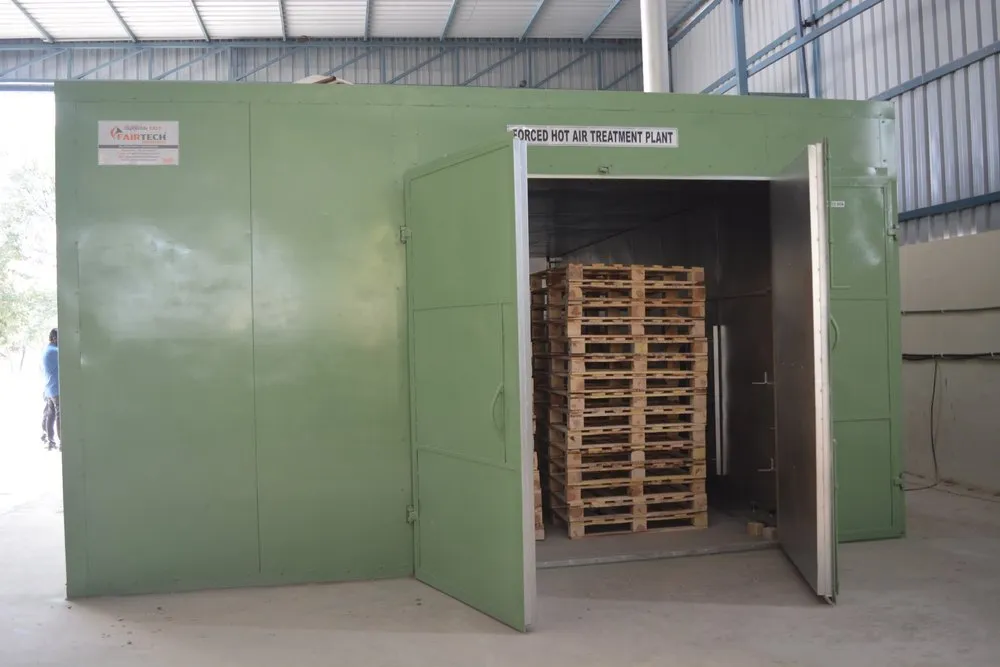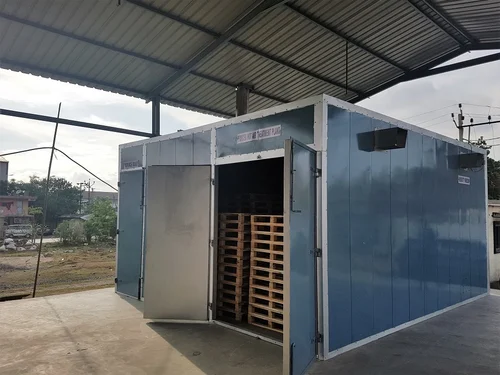
Thermal Evaporation & Gas Evaporation
Its purpose: to reduce moisture to a specific moisture content (e.g., 6–12% depending on the application) or to meet quarantine requirements (ISPM-15). Heat treatment in the context of quarantine involves bringing the core temperature of the wood to 56°C for 30 minutes to kill insects and larvae.
Equipment: Kilns of all types (conventional, dehumidification, vacuum, RF) with control of air flow, temperature, and humidity.
This step not only protects the wood, but also the factory’s reputation and product quality.
Monitoring: Core temperature sensors, time logs, moisture meters (MC meters).Effect: Improves wood stability and reduces cracking caused by moisture changes if done correctly. However, excessive heating or an incorrect system can cause deformation or loss of mechanical properties.

Our benefits
Heat and gas treatment of pallets ensures that the product comes out clean, safe, and ready for export anywhere in the world.
- Prevents rot and insects
- Maintains pallet quality for longer.
- Improves wood stability and reduces water absorption
If the goal is to export and comply with ISPM-15: Use a heat treatment cycle (ensure the part core reaches 56°C for 30 minutes). Record the temperatures and maintain certification records
If using a waterborne coating: Dryers/tunnels at 40–60°C help dry faster without damaging the wood. If using a solvent-borne coating, ventilation and VOC emission treatment (thermal oxidizer or carbonic acid) may be required.
Moisture Content (MC) measurement after each stage. Inspection for cracks, warping, and mechanical load testing of the sample. If treating stone for export: ISPM seal and certificate with each shipment.
